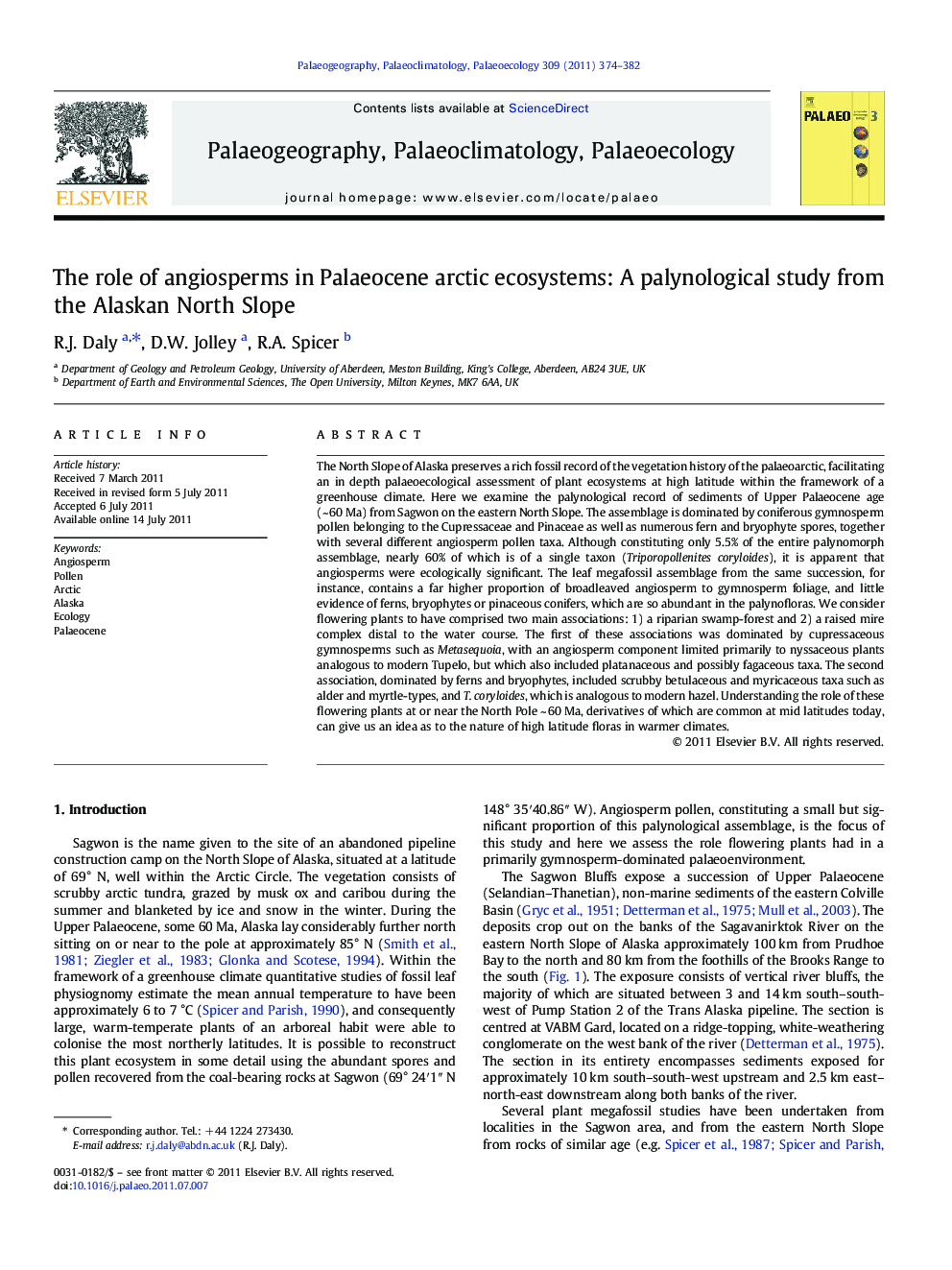| Article ID | Journal | Published Year | Pages | File Type |
|---|---|---|---|---|
| 4467264 | Palaeogeography, Palaeoclimatology, Palaeoecology | 2011 | 9 Pages |
The North Slope of Alaska preserves a rich fossil record of the vegetation history of the palaeoarctic, facilitating an in depth palaeoecological assessment of plant ecosystems at high latitude within the framework of a greenhouse climate. Here we examine the palynological record of sediments of Upper Palaeocene age (~ 60 Ma) from Sagwon on the eastern North Slope. The assemblage is dominated by coniferous gymnosperm pollen belonging to the Cupressaceae and Pinaceae as well as numerous fern and bryophyte spores, together with several different angiosperm pollen taxa. Although constituting only 5.5% of the entire palynomorph assemblage, nearly 60% of which is of a single taxon (Triporopollenites coryloides), it is apparent that angiosperms were ecologically significant. The leaf megafossil assemblage from the same succession, for instance, contains a far higher proportion of broadleaved angiosperm to gymnosperm foliage, and little evidence of ferns, bryophytes or pinaceous conifers, which are so abundant in the palynofloras. We consider flowering plants to have comprised two main associations: 1) a riparian swamp-forest and 2) a raised mire complex distal to the water course. The first of these associations was dominated by cupressaceous gymnosperms such as Metasequoia, with an angiosperm component limited primarily to nyssaceous plants analogous to modern Tupelo, but which also included platanaceous and possibly fagaceous taxa. The second association, dominated by ferns and bryophytes, included scrubby betulaceous and myricaceous taxa such as alder and myrtle-types, and T. coryloides, which is analogous to modern hazel. Understanding the role of these flowering plants at or near the North Pole ~ 60 Ma, derivatives of which are common at mid latitudes today, can give us an idea as to the nature of high latitude floras in warmer climates.
► Terrestrial sporomorphs were studied from Palaeocene rocks from Northeast Alaska. ► Temperate, dominantly arborescent, vegetation occupied high latitudes at this time. ► This ecosystem, although dominated by gymnosperms, included diverse angiosperms. ► Aiding our understanding of angiosperms at high latitudes in greenhouse climates.
